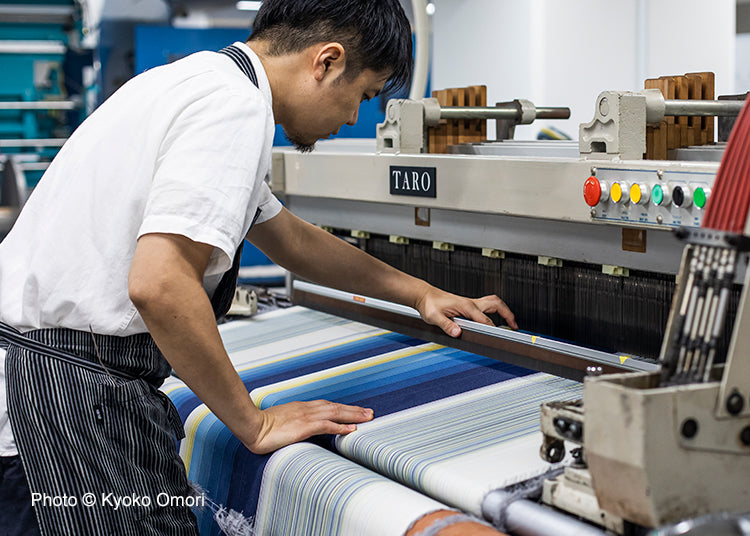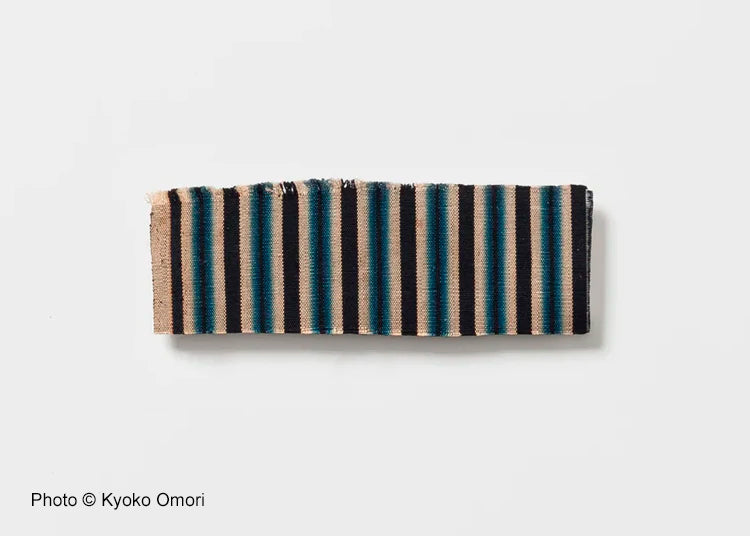Redesigned Haori - Kokura Ori Models
Production of Kokura Ori began in the Buzen Ogura Domain (now Kitakyushu City) during the Edo period, a time when cotton fabrics were first becoming widespread in Japan. Originally woven by the women of samurai families, Kokura Ori featured a distinctive striped pattern with the density of the warp threads being about twice that of the weft threads. Due to its thickness and durability, it became a celebrated specialty of the Buzen Ogura Domain and was highly valued by samurai throughout the country for use in their hakama (pleated skirts) and obi (belts). The fabric was so sturdy that there are legends claiming it could stop a spear. Eventually, it became widely used in clothing for the common people as well.
In the Meiji period, a new type of fabric called "Shimofuri Ogura," made from twisted black and white yarns to create a gray effect, was developed. This fabric was used for male students' summer uniforms, making Kokura Ori popular nationwide once again. It is even mentioned in the literary works of authors such as Natsume Soseki and Tayama Katai. However, with the rise of machine production, the making of Kokura Ori ceased in the early Showa period, only to be revived decades later by a single dyeing and weaving artist.


The revival of the once extinct Ogura Ori was spearheaded by Noriko Tsukishiro, a dyeing and weaving artist from Kitakyushu City. Intrigued by the costumes of Noh theater, Tsukishiro embarked on a career in dyeing. In 1983, she stumbled upon a small piece of Ogura Ori in a local antique shop. The fabric was sophisticated and boldly striped vertically. It was thick yet supple to the touch, and despite being cotton, it had a luster akin to silk. Captivated by this ancient cloth, which had been a child’s hakama during the Edo period, Tsukishiro began her research into its revival. She discovered that the warp threads were thinner yet about twice as dense as the weft threads, which explained the fabric's strikingly beautiful vertical stripes—a characteristic not found in other cotton fabrics. However, weaving with the historical thread ratio resulted in a stiff and rough texture. Tsukishiro’s ideal was a fabric that, like well-worn material, had a texture and glossy appearance that blended seamlessly with the skin. After numerous experiments, by 1984, she finally perfected the foundation of the modern Ogura Ori by using approximately three times more warp threads than weft threads.
This is a custom-made product tailored from new fabric bolts according to the size selected by the customer.



